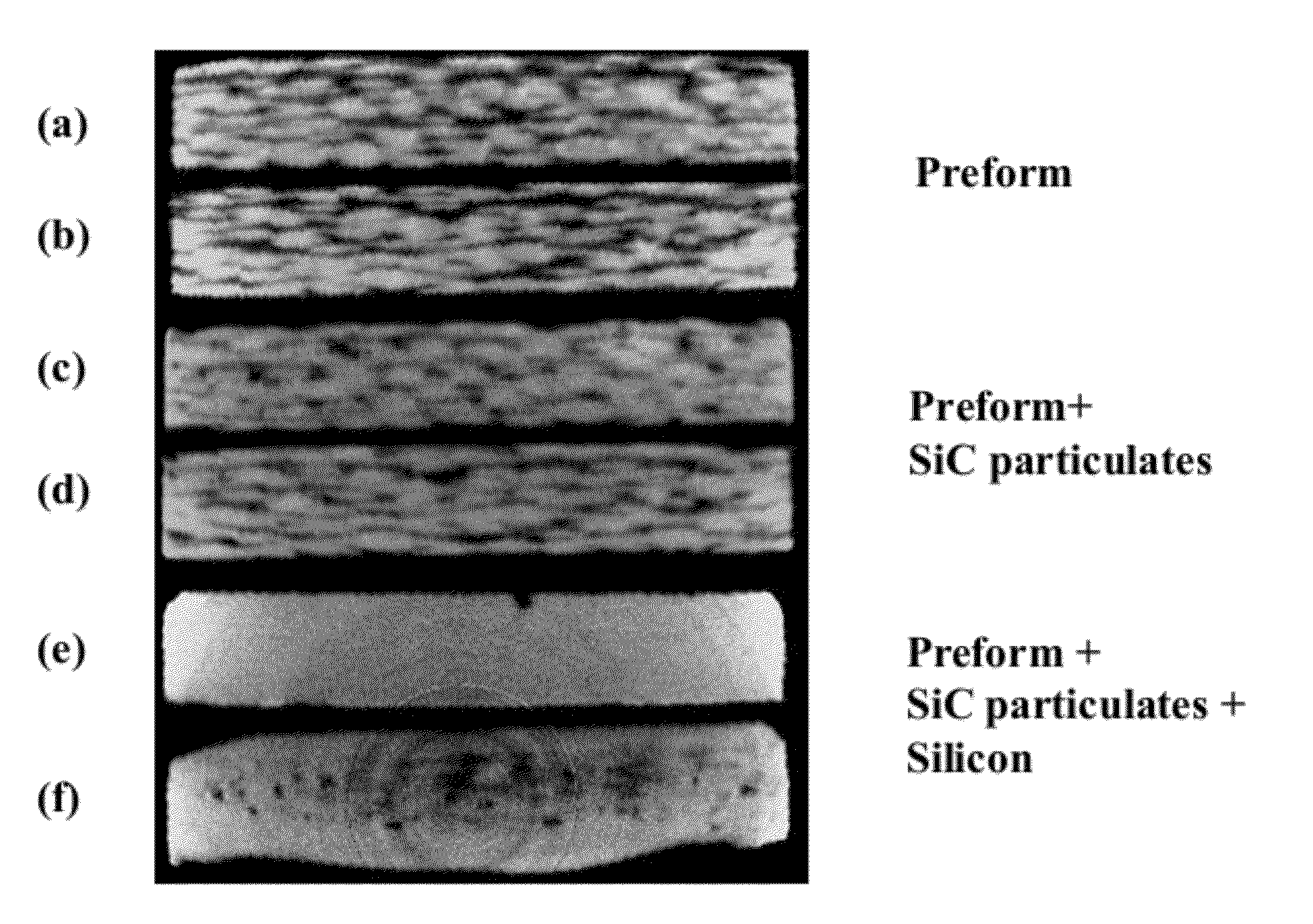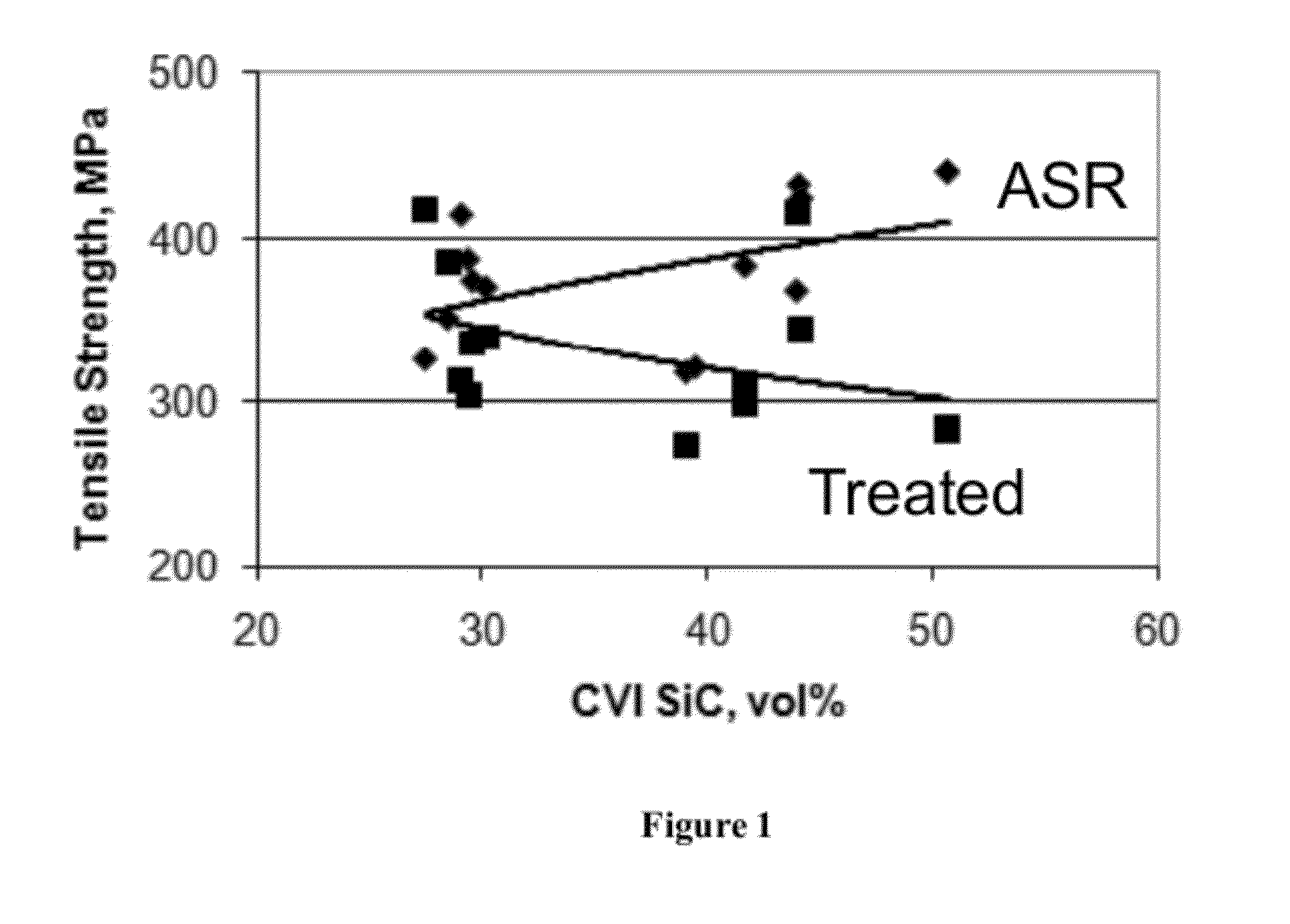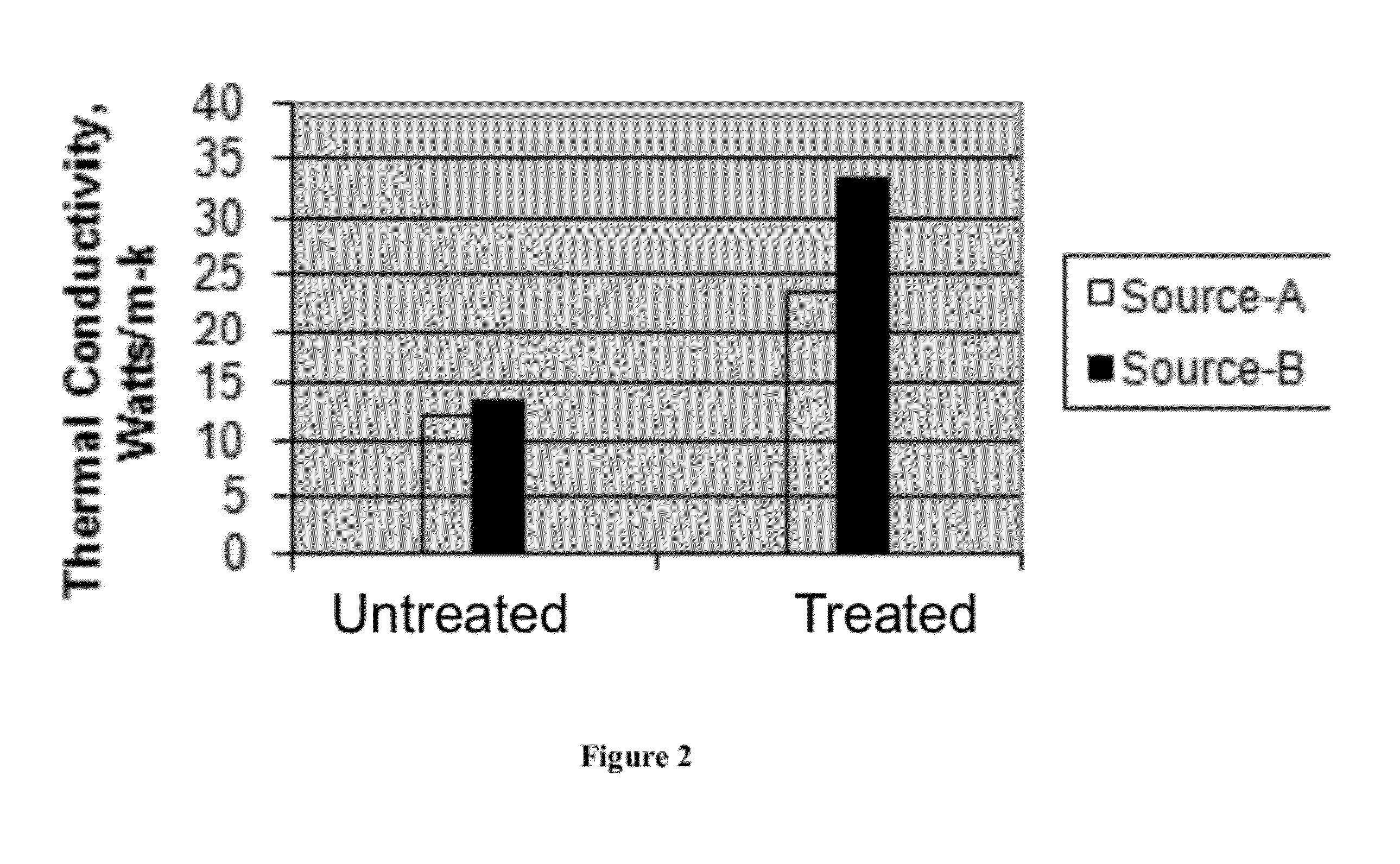Method of improving the thermo-mechanical properties of fiber-reinforced silicon carbide matrix composites
a technology of fiber reinforced silicon carbide and composite materials, applied in the field of ceramic matrix composite materials, can solve the problems of not allowing the composite to display optimal thermal conductivity and creep resistance, the microstructure typically contains meta-stable atomic defects, and the composite material cannot achieve the potential of being effective, etc., to achieve the effect of microstructure and stoichiometry, and improving the thermo-mechanical properties of the ceramic matrix composite material
- Summary
- Abstract
- Description
- Claims
- Application Information
AI Technical Summary
Benefits of technology
Problems solved by technology
Method used
Image
Examples
example 1
[0038]For this case, Sylramic-iBN / BN / SiC panels were fabricated with different fractions of CVI SiC matrix, ranging from about 25 volume percent to about 45 volume percent. Half of each panel was kept in its as-fabricated or as-received condition, and the other half was treated in one atmosphere of argon at 1700° C. Based on prior silicon removal studies, the panels with the lowest SiC content were treated for 1 hr and those with the highest SiC content for 20 hrs. The open porosity in each half-panel was then filled with epoxy, and tensile specimens machined from the panels for strength testing at room temperature. FIG. 1 shows that as the CVI SiC vol % increased in the untreated composites, the as-fabricated ultimate tensile strength of the composites also increased. This effect is not understood, but does not appear serious for the composites with lower SiC fraction because their UTS increased after treatment, approaching that of the untreated higher SiC content composites. Howev...
example 2
[0039]For this case, Sylramic and Sylramic-iBN / BN / SiC panels were fabricated at two CMC vendors with the highest possible volume fraction of CVI SiC. These panels were effectively full CVI SiC matrix composites with a matrix volume fraction of about 50%, a closed porosity of about 10%, and an open porosity of about 0%. One-half of each panel type was treated by the processes of this invention, and then both halves were evaluated in terms of thermal conductivity and creep resistance. The treated panels were treated in one atmosphere of argon at 1800° C. for 1 hour. FIG. 2 shows that after treatment, the room temperature transverse thermal conductivity approximately doubled for both CVI SiC / SiC composite types obtained from the two different vendors. Although not shown, the axial thermal conductivity of these composites after treatment also increased by about 75%. This improvement can be attributed totally to an improvement in the thermal conductivity of the full CVI SiC matrix becaus...
example 3
[0041]For this case, Sylramic-iBN / BN / SiC panels were fabricated with various intermediate fractions of CVI SiC matrix, ranging from about 20 vol % to 39 vol %. Half of each panel was kept in its as-fabricated condition, and the other half was treated in one atmosphere of argon at 1700° C. Based on prior silicon removal studies, the lowest CVI-SiC half-pan-is were treated for 1 hr. and the highest CVI-SiC half-panels for 20 hrs. Remaining matrix porosity in all the untreated and treated panel pieces was then filled as much as possible either by the melt infiltration of silicon near 1400° C. or by an initial slurry infiltration of SiC particulate followed by silicon melt-infiltration. The final panels were then machined into various sized specimens for thermal conductivity and creep measurements.
[0042]FIG. 4 shows the effect of treatment on the 25° C. and 1300° C. transverse thermal conductivity of Sylramic-iBN fiber-reinforced SiC / SiC composites with about 20, 28, and 39 vol % CVI Si...
PUM
| Property | Measurement | Unit |
|---|---|---|
| Temperature | aaaaa | aaaaa |
| Temperature | aaaaa | aaaaa |
| Temperature | aaaaa | aaaaa |
Abstract
Description
Claims
Application Information
 Login to View More
Login to View More - R&D
- Intellectual Property
- Life Sciences
- Materials
- Tech Scout
- Unparalleled Data Quality
- Higher Quality Content
- 60% Fewer Hallucinations
Browse by: Latest US Patents, China's latest patents, Technical Efficacy Thesaurus, Application Domain, Technology Topic, Popular Technical Reports.
© 2025 PatSnap. All rights reserved.Legal|Privacy policy|Modern Slavery Act Transparency Statement|Sitemap|About US| Contact US: help@patsnap.com



